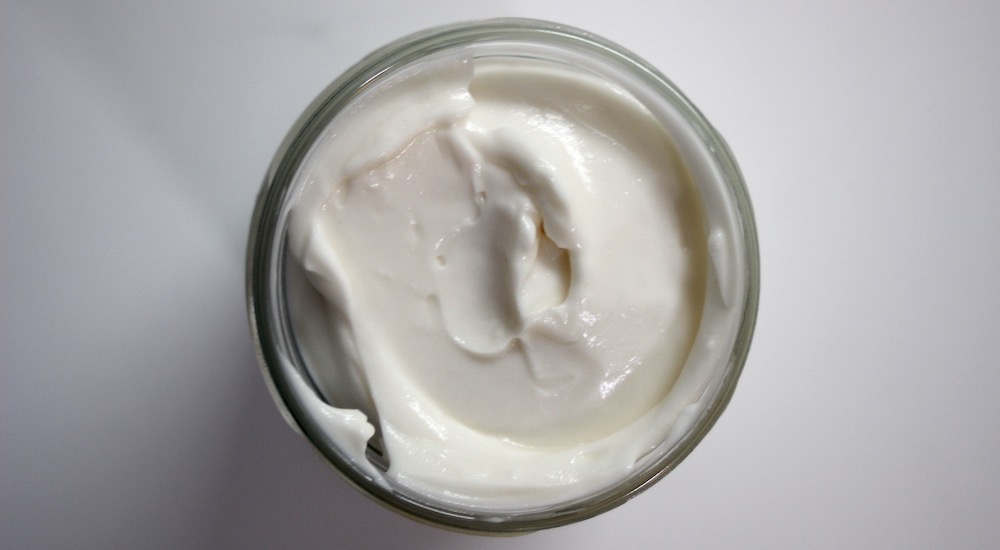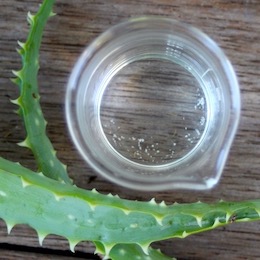Home / How-to videos / Nourishing conditioner/hair mask
Nourishing conditioner/hair mask
Nourishing conditioner/hair mask

The great thing about this formula is that it can be used a number of different ways. You can use it like you use your regular conditioner, you can use it as a rich and nourishing hair mask and you can use it to keep dry ends moist and tame frizz. It is intentionally very thick, because personally I love to really slather on a rich conditioner, but you can make it thinner by reducing the % of conditioner pellets (see Substitutions below).
The key actives included in this formula are:
Hydrolysed quinoa - is considered a complete protein, packed with vitamins and minerals as well as 17 amino acids, including all eight essential amino acids, which help repair damage to the hair shaft while its proteins coat and strengthen the hair. It can help to gently cleanse and nourish your hair while aiding in hair colour retention, conditioning and protection. Also said to aid in hair growth while preventing breakage, increase shine and healthy appearance of the hair.
D-Panthenol - also known as Provitamin B5, attracts moisture from the air and binds to hair follicles. When D-Panthenol is used as a moisturising agent in shampoos and conditioners, the hair feels lubricated, but not greasy and can also help improve shine.
Coco Caprylate - is a high-spreading oil, natural emollient and silicone alternative. It helps moisturise and add glide to finished products, giving them a silky touch feeling. It can help soften hair and improve manageability and shine.
Coconut oil - can help soften and repair hair, especially dry hair.
Manuka essential oil - has a fresh, clean scent and can help to nourish the scalp and balance oil production. Its antimicrobial properties can help to kill bacteria that can irritate the scalp and also help to prevent dandruff.
Aloe vera - can help to strengthen hair and soothe an irritated scalp.
Recipe
Makes 500g - use our Batch Size Calculator and the percentages provided here to easily adjust the volume of your batch.
Ingredients
Phase A
307g | 61.4% Water
50g | 10% Aloe vera juice (See recipe for aloe vera juice at the bottom of the page)
25g | 5% Glycerin, certified organic
Phase B
50g | 10% Conditioner pellets
20g | 4% Cetearyl alcohol
5g | 1% Coco Caprylate
10g | 2% Coconut oil, virgin, certified organic (or RBD)
Phase C
2g | 0.40% Manuka essential oil (or other essential/fragrance oil of your choice)
5g | 1% Geogard 221
10g | 2% Hydrolysed quinoa
15g | 3% D-panthenol: 75%
1g | 0.20% Vitamin E, certified organic (or conventional)
Method
- Heat phase A to 80°C
- Add Phase B and stir to combine, then blend with a stick blender to thicken
- Continue to blend/stir until thickened. It will thicken as it cools
- Allow to cool to <40°C then add Phase C
- Stir to combine
- As a conditioner - Apply to freshly shampooed hair, leave in for around 3 - 5 minutes and rinse
- As a hair mask - Apply to freshly shampooed hair, leave in for 10 - 15 minutes (or overnight if you wish), rinse out
- As a leave in product - Use a small amount on fingers and apply the the ends of wet or dry hair or rub a small amount into palms and lightly slick onto dry hair the tame frizz and flyaways.
- For a more liquid version of this you can reduce the % of conditioner pellets. The lowest you would want to go is 2.5%. Replace the difference with more water. This may change the final feel and conditioning ability of the final product.
- Aloe vera juice can be replaced with more water.
- Coco Caprylate and/or coconut oil can be replaced with a different carrier oil/oils. This may change the final feel of the product.
- Manuka essential oil can be replaced with a different fragrance/essential oil or removed completely. If removed, replace the % with more water.
Recipes
 Aloe vera juice |
 Solid shampoo bars |
Follow us on Instagram or Facebook for more recipes, news and specials!
